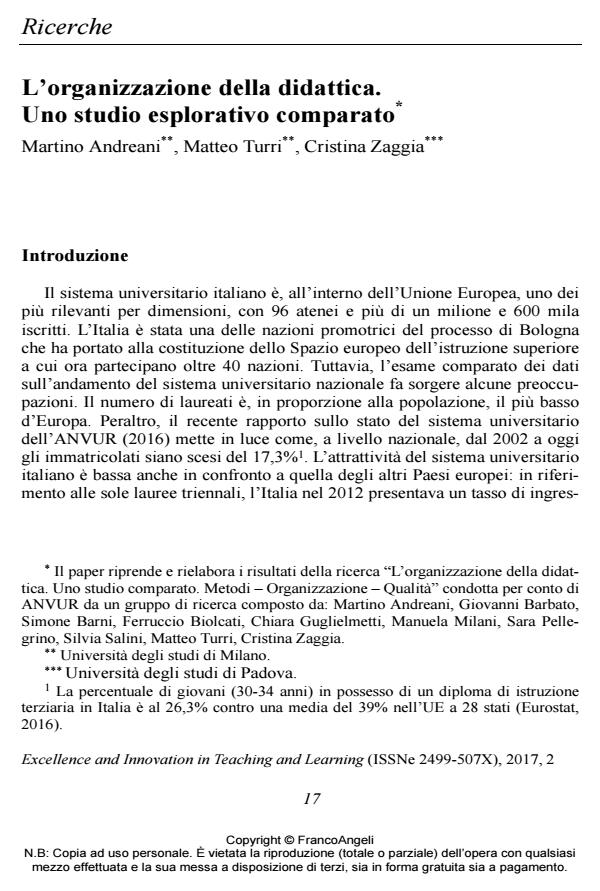Didactic organisation. An explorative study
Journal title EXCELLENCE AND INNOVATION IN LEARNING AND TEACHING
Author/s Martino Andreani, Matteo Turri, Cristina Zaggia
Publishing Year 2017 Issue 2017/2
Language Italian Pages 17 P. 17-33 File size 172 KB
DOI 10.3280/EXI2017-002002
DOI is like a bar code for intellectual property: to have more infomation
click here
Below, you can see the article first page
If you want to buy this article in PDF format, you can do it, following the instructions to buy download credits

FrancoAngeli is member of Publishers International Linking Association, Inc (PILA), a not-for-profit association which run the CrossRef service enabling links to and from online scholarly content.
OECD surveys show that students in Italy take longer to complete their higher education qualifications, access studies at a later stage, and have a high dropout rate. This paper outlines the main results of a study funded by ANVUR that involved 40 programme study coordinators from different countries (Italy, Switzerland and the UK).The programmes of study involved in the research concerned three fields: philosophy, management and chemistry. Each programme coordinator was interviewed about the organisation; the teaching, learning and assessment methods; and the quality assurance system of the respective undergraduate degrees. Compared with the other countries studied, and recognising the specificities of each discipline, the findings emphasise three critical aspects concerning the Italian way of organising, providing and evaluating the study programmes: the control of the students career; the learning assessment and the professional development of the teaching staff.
Keywords: Guidance; teaching, learning and assessment methods; quality assurance.
Martino Andreani, Matteo Turri, Cristina Zaggia, L’organizzazione della didattica. Uno studio esplorativo comparato in "EXCELLENCE AND INNOVATION IN LEARNING AND TEACHING" 2/2017, pp 17-33, DOI: 10.3280/EXI2017-002002